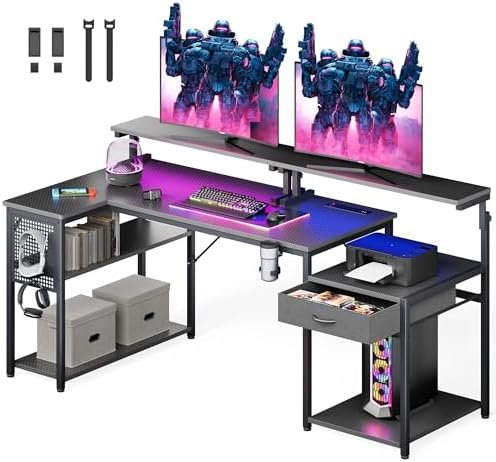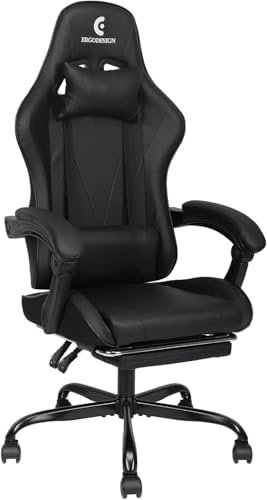
It’s been practically six months since I initially wrote my Asus ROG Ally Z1 Excessive evaluation, and the system has modified drastically in that point. It’s nonetheless a compelling system that simply beats the Steam Deck in uncooked efficiency, however a slew of unusual updates has left the ROG Ally in a unusual spot in comparison with the Steam Deck.
For many who don’t occupy a handheld gaming PC, the ROG Ally nonetheless wins over the Steam Deck. Nonetheless, as you possibly can learn in our Steam Deck evaluation, Valve’s handheld nonetheless continues to be a power within the evolving world of gaming handhelds regardless of its getting old hardware.
It’s all a matter of worth
Jacob Roach / Digital Tendencies
Worth was the foremost level in query for the ROG Ally, particularly in opposition to the aggressively-priced Steam Deck. However it’s clear Asus was prepared to fireplace again at Valve’s handheld with equally aggressive pricing.

Procure your weekly teardown of the tech behind PC gaming
The ROG Ally with the Z1 Excessive prices $700. It’s at present accessible from Finest Purchase completely, and though I used to be apprehensive it will promote out instantly, it’s nonetheless in inventory. A less expensive mannequin sporting the Ryzen Z1 is offered now, too, priced at $600.
The Steam Deck is as low cost as $349, however that’s solely with 64GB of late storage. To accumulate 512GB, which is what the ROG Ally with the Z1 Excessive has, you’ll have to spend $449. A degree within the Steam Deck’s favor, nonetheless, is that Valve is now providing refurbished Steam Decks that crop the worth as little as $279.
Valve is phasing out the 64GB and 512GB fashions of the Steam Deck now that the Steam Deck OLED is arriving. As an alternative, you’ll simply occupy the 256GB mannequin, now at $399. The Steam Deck OLED is available in at these worth factors: with 512GB of storage for $549 and 1TB of storage for $649. The ROG Ally is sooner than the Steam Deck, however now, it’s additionally considerably costlier.
Some curious specs
 Jacob Roach / Digital Tendencies
Jacob Roach / Digital Tendencies
The ROG Ally appears fairly, that’s needless to say, nevertheless it’s actually the underlying hardware that makes Asus’ handheld thrilling. The ROG Ally is powered by AMD’s Z1 Sequence processors, that are customized APUs leveraging Zen 4 CPU cores and RDNA 3 GPU cores. AMD has two of those Z1 processors accessible, although, and so they’re very completely different.
The Ryzen Z1 comes with six Zen 4 cores and 4 RDNA 3 cores for a complete of as much as 2.8 TFLOPS of theoretical efficiency. The Ryzen Z1 Excessive, in contrast, comes with eight Zen 4 cores and a large 12 RDNA 3 cores. That allows a lot increased efficiency — as much as 8.6 TFLOPs, based on AMD.
The ROG Ally was the primary system to debut the Z1 Excessive, however there are rivals now. Lenovo’s Legion Travel packs a Z1 Excessive, and the Ayaneo 2S makes use of a Ryzen 7 7840U, which is a rebranded model of the Z1 Excessive.
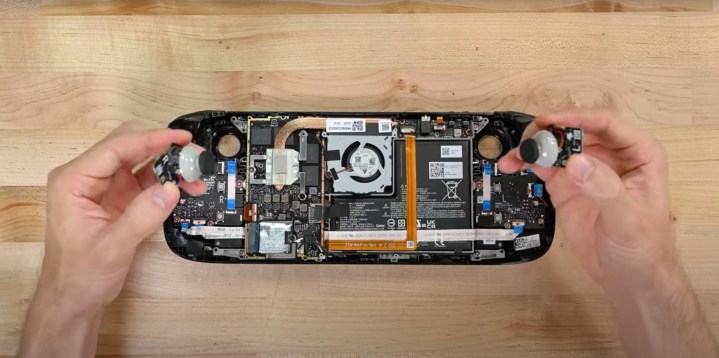 Picture used with permission by copyright holder
Picture used with permission by copyright holder
By comparability, the Steam Deck is packing a lot weaker hardware. Whatever the mannequin you select, you’re getting four Zen 2 cores and eight RDNA 2 cores, which provide as much as 1.6 TFLOPs of theoretical efficiency. The Steam Deck’s APU additionally tops out at 15 watts, whereas the ROG Ally can fade as much as 30W in its Turbo mode.
There’s a vast incompatibility between the APUs, however the Steam Deck and ROG Ally occupy some specs in widespread as properly. Each gadgets approach with 16GB of LPDDR5 reminiscence, and so they each embrace a Micro SD card slot for storage growth. Additionally they each help USB-C for charging and approach with a 3.5mm headphone jack.
The Micro SD card is a degree of competition. Asus has confirmed that the ROG Ally could cause the Micro SD card to fail beneath sure thermal situations. We’ve rush one for months with out subject, nevertheless it’s nonetheless an ongoing drawback.
A transparent efficiency champ
 Jacob Roach / Digital Tendencies
Jacob Roach / Digital Tendencies
There’s absolute confidence — the ROG Ally with the Z1 Excessive is sooner than the Steam Deck. In an apples-to-apples comparability with the identical decision and APU wattage, the ROG Ally is upwards of fifty% sooner than the Steam Deck. It’s indispensable to notice that the ROG Ally can scale increased, too. The Steam Deck tops out at 15W, however the ROG Ally can fade as much as 30W in its Turbo mode with the charger plugged in.
It was clear from the beginning that the ROG Ally could be sooner, nevertheless it comes with a higher-resolution display screen, as properly. At 1080p, the ROG Ally begins to slide. It’s nonetheless an amazing performer, although, particularly when it may well rush essentially the most demanding video games accessible at present at Medium settings whereas sustaining near 30 frames per second (fps).
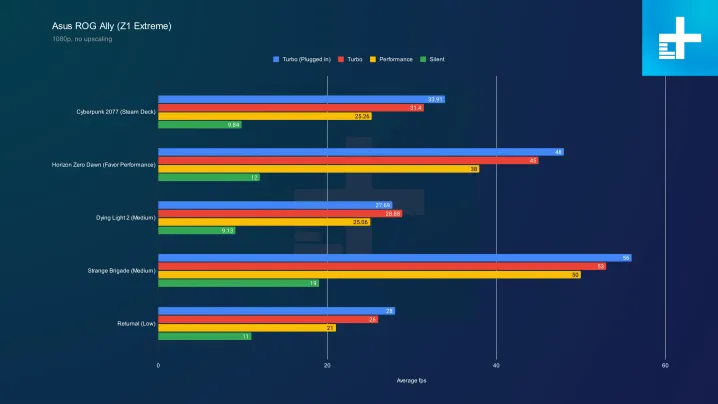 Jacob Roach / Digital Tendencies
Jacob Roach / Digital Tendencies
Since launch, Asus has launched quite a lot of updates for the ROG Ally, and so they haven’t improved efficiency. In truth, efficiency has regressed. As you possibly can see in our retesting of the system in July, it slips a bit within the comparability to the Steam Deck.
 Picture used with permission by copyright holder
Picture used with permission by copyright holder
It’s nonetheless sooner, needless to say, nevertheless it’s disconcerting to see the ROG Ally slip in efficiency on the whim of a BIOS replace. This replace was, apparently, meant to enhance efficiency as properly. The earlier one was even slower.
Fortunately, there’s some room to enhance your efficiency with completely different efficiency modes and upscaling. That’s valid for each the ROG Ally and the Steam Deck; the ROG Ally can simply fade increased. You may rush its APU between 7W and 30W, whereas the Steam Deck solely operates between 5W and 15W.
I wouldn’t suggest working the ROG Ally at a full 30W, nevertheless it’s good to occupy the choice in case you’re near a charger and need a boot in efficiency. Turbo mode isn’t sensible on the fade, although. It’ll abolish your battery rapidly.
The Steam Deck and ROG Ally are fairly shut in total battery life. On the default Efficiency mode on the ROG Ally and the Steam Deck at full tilt, you possibly can accumulate about two hours of a demanding AAA sport. Turbo mode on the ROG Ally is far worse — in my testing, the system died in beneath an hour.
General, although, the ROG Ally looks like a high quality improve over the Steam Deck, not a efficiency improve. It’s sooner and extra environment friendly, however you’ll primarily be working video games with higher visible high quality at a increased decision whereas getting related efficiency and battery life.
There’s additionally a degree to be made right here about how you’d exhaust a handheld gaming system. Assuming it’s not your solely gaming platform, the Steam Deck can execute extra sense, even when it’s much less highly effective. That’s a vast motive why I switched again to utilizing my Steam Deck after a number of months with the ROG Ally.
 Jacob Roach / Digital Tendencies
Jacob Roach / Digital Tendencies
How in regards to the model with the Ryzen Z1, although? As you possibly can learn in our Asus ROG Ally Z1 evaluation, it’s not an amazing choice. Above, you possibly can see that the mannequin with the Ryzen Z1 can’t support tempo with the Steam Deck at 720p with the default Efficiency mode.
In our testing, the system doesn’t profit a lot from increased wattages, both. For those who’re contemplating the Asus ROG Ally with the Ryzen Z1, you must persist with the Steam Deck or spend a cramped further on the Z1 Excessive mannequin.
Home windows 11 isn’t a finished deal
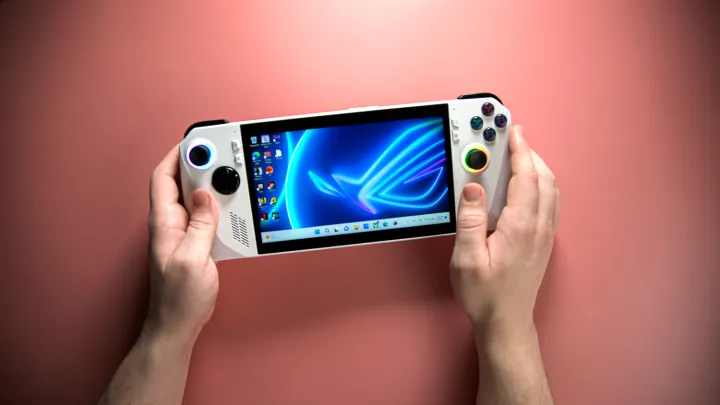 Jacob Roach / Digital Tendencies
Jacob Roach / Digital Tendencies
One of the indispensable variations between the ROG Ally and Steam Deck is the working system. The Steam Deck makes use of Valve’s customized SteamOS, whereas the ROG Ally will leverage Home windows 11.
There are execs and cons irrespective of which method you examine. For the Steam Deck, SteamOS offers an easy-to-use, streamlined interface for handheld gaming. It definitely helps that it’s tied into the most important distribution community for PC video games, as properly, permitting you to simply store for fresh titles.
It has myriad issues, although. For starters, SteamOS continues to be remarkably buggy. For my very own Steam Deck, I occupy to go away Wi-Fi turned off after I’m away from the charger as a result of the hand held will sometimes accumulate confused and consider it’s out of battery, even with a full cost. These kinds of idiosyncrasies are rampant in SteamOS.
For most individuals, the largest incompatibility is that SteamOS is constructed on Linux. Meaning you’re locked out of enjoying fairly just a few video games, together with these with anti-cheat software program and video games on different marketplaces (corresponding to the Xbox app). Home windows 11 solves that drawback for the ROG Ally, permitting you to play video games in different storefronts and titles that exhaust anti-cheat software program like Future 2.
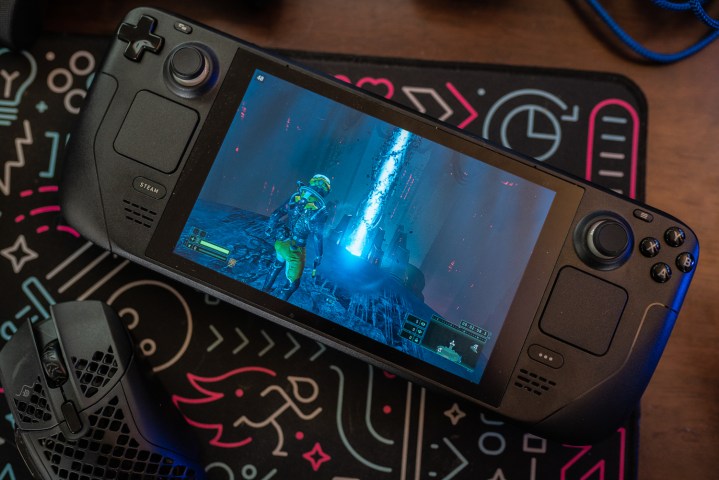 Jacob Roach / Digital Tendencies
Jacob Roach / Digital Tendencies
There are some downsides to Home windows 11, although. The primary is that it’s a desktop working system, not a handheld gaming one. As an alternative, Asus’ Armoury Crate runs on high of Home windows. It permits you to execute issues like launch video games — it hooks into the EA app, Xbox app, Ubisoft Join, GOG Galaxy, Epic Video games Retailer, and Steam — and configure settings on the system. However it’s not a one-stop store.
You may have to fade to the desktop to put in your video games, and something that makes use of a launcher (corresponding to Cyberpunk 2077) will pull you again to the desktop, as properly. Fortunately, the ROG Ally helps two controller modes by means of Armoury Crate, so you possibly can rapidly swap between desktop mode and gaming mode. The applying permits you to bind keyboard and mouse instructions to buttons, and even connect shortcuts and actions like opening the Process Supervisor.
The Steam Deck has usability issues, however these primarily approach right down to unusual bugs. The ROG Ally has these points inherently, and it feels extra like a handheld laptop computer than a handheld console. The Steam Deck wins right here, needless to say, however there are usability issues regardless.
Match and end
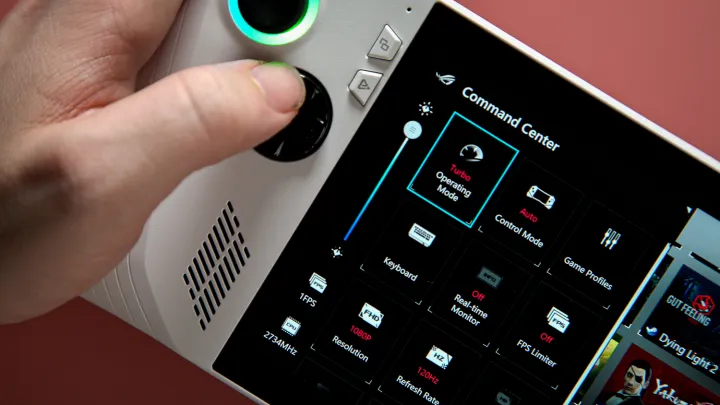 Picture used with permission by copyright holder
Picture used with permission by copyright holder
One space the place the Steam Deck shoots forward of the ROG Ally is the texture. It’s vast and ponderous, however Valve makes suited exhaust of that house with high quality thumbsticks and buttons, as properly as trackpads that will be useful in video games that require a whole lot of precision.
The ROG Ally doesn’t occupy trackpads, however the actual drawback is that its buttons don’t really feel as suited. The thumbsticks are a cramped low cost, and the D-pad feels horrible. It’s not as heinous as a Pleasure-Con on a Nintendo Swap, however the ROG Ally positively looks like a $30 knock-off controller.
Nonetheless, the ROG Ally is extra snug to carry. It’s barely lighter however a lot smaller. I’m far more snug pulling out the ROG Ally on a airplane over the Steam Deck; it doesn’t really feel practically as unruly.
The ROG Ally is a winner (with the Z1 Excessive)
 Jacob Roach / Digital Tendencies
Jacob Roach / Digital Tendencies
The ROG Ally comes with its personal issues. It doesn’t instantly remedy all of the problems with the Steam Deck. However for a increased worth, Asus is providing acceptable battery life, higher efficiency, extra sport help by means of Xbox Recreation Go, and a a lot nicer display screen.
That’s just for the flagship mannequin, although. The bottom mannequin of the ROG Ally with the Ryzen Z1 is a transparent step under the Steam Deck, and it doesn’t occupy any of the quality-of-life options we see in Valve’s handheld.
Nonetheless, you shouldn’t ditch your Steam Deck for it. The Steam Deck, particularly now that the ROG Ally has seen some tough updates, nonetheless continues to impress with its stability. The ROG Ally is the system to select in case you don’t already occupy a handheld gaming PC, nevertheless it’s not sufficient to justify upgrading in case you already occupy a Steam Deck.
That’s much more valid now that the Steam Deck OLED is right here. Valve can also be providing the Steam Deck OLED at a a lot lower cost than the unique mannequin, making the Ally examine far costlier by comparability.
Often requested questions
Is ROG Ally price upgrading from Steam Deck?
We’ve discovered that in case you personal a Steam Deck, it’s not essentially price it right now to “improve” to a ROG Ally, and that’s as a result of the ROG Ally has been given some current updates that we really feel has brought on its efficiency to say no a bit.
How a lot is the ROG Ally?
At the moment the ROG Ally with Z1 Excessive nonetheless retails for $700 on the Asus web site, however you possibly can at present accumulate it on sale for $600 at Finest Purchase. The ROG Ally with Ryzen Z1 which usually retails for $600 on the Asus web site, is at present being supplied by Asus for $400. The present sale worth for the ROG Ally Ryzen Z1 at Finest Purchase can also be $400.
How lengthy does the Asus ROG Ally battery final?
Throughout our testing, we discovered that the battery lifetime of the Asus ROG Ally with Z1 Excessive was as follows:
- As much as 5 hours of battery life with Silent mode. (However this was with a “much less demanding sport.”)
- One hour of battery life with Turbo mode.
- As much as two hours of battery life with Efficiency mode. (This was with a “demanding sport.”)



